Beginners guide to shrimp keeping
Table of contents
- A little guide for beginners in shrimp keeping
- A nano aquarium for beginners - does it make sense at all?
- Water chemistry, a book with seven seals?
- The aquarium temperature
- The filter in the aquarium - basics
- Different aquarium filters - internal filters and air lifters
- Different aquarium filters - external filters and backpack filters
- Aquarium animals need oxygen
- A good substrate for the aquarium
- Aquarium decoration with roots and stones
- Plants in the aquarium
- Running in the aquarium
- Water changes and aquarium care
- Shrimp food
- Foliage in the aquarium
A small guide for beginners in shrimp keeping
Dwarf shr imp can be kept very well in nano aquariums, i.e. in aquariums with an edge length of less than 60 cm. This space is sufficient for the crawlers, because they are not particularly fond of swimming and prefer to search all possible surfaces for food. Therefore, you are quite free in choosing an aquarium, and even a nano aquarium is suitable for beginners and novices in aquaristics, if you keep a few things in mind. If you want to get a standard complete set of 60 cm edge length and usually 54 liters content, however, note that the filters included in these sets are often not shrimp-proof. We will discuss this later. Particularly attractive, however, are nano aquariums that are also available specifically for shrimp, with a shrimp-safe filter and suitable lighting. Of course, you can also keep shrimp in larger aquariums!
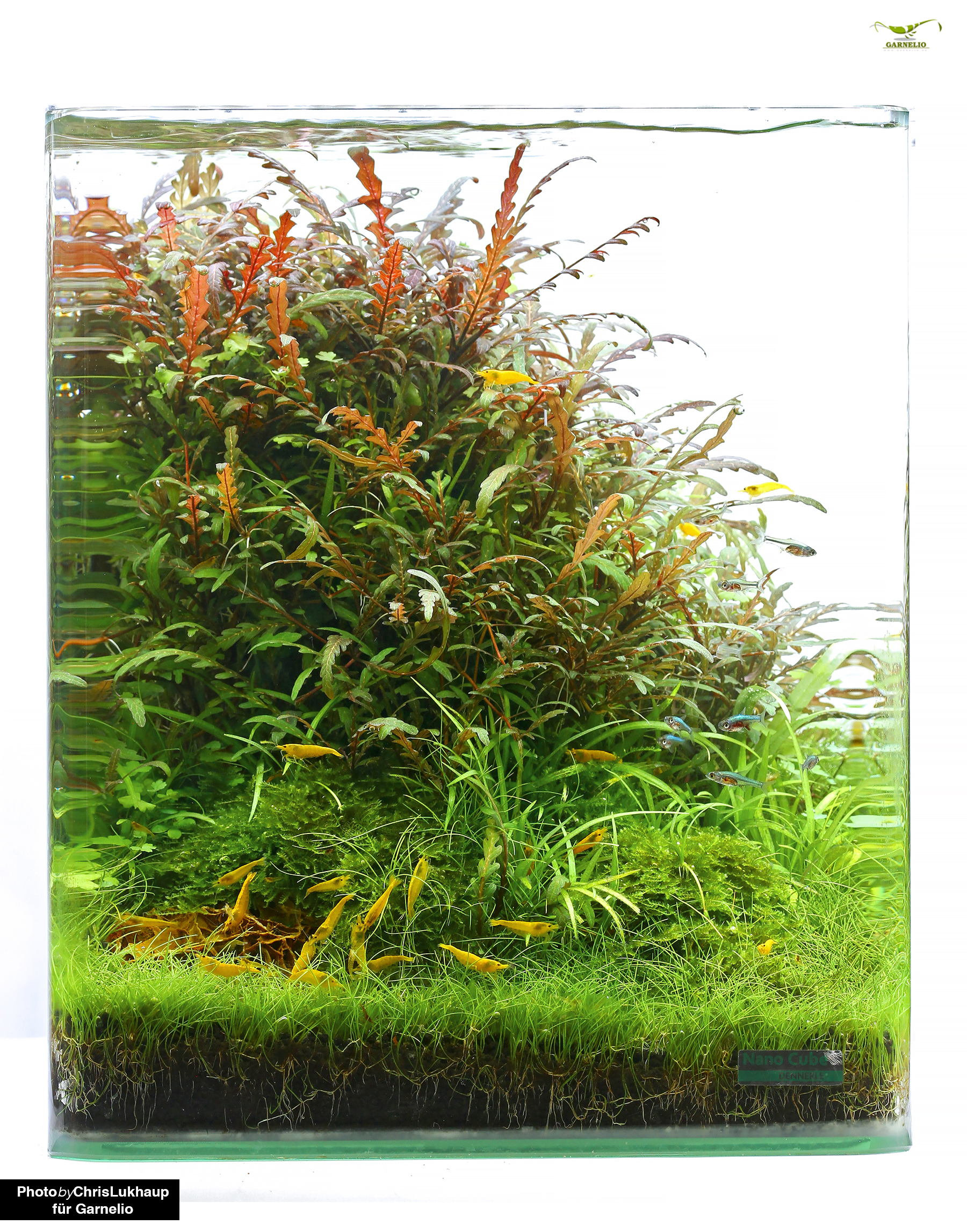
A nano aquarium for beginners - does it make sense at all?
Often beginners in aquaristics are told that a nano aquarium belongs to the high school of the aquarium hobby - but you can safely reject this statement. In the meantime, there are also suitable accessories for nano aquariums, such as particularly small filters, suitable lighting systems or small heating rods - an important reason why nano aquaristics was not so easy in the past was simply the lack of technical equipment. Here, a lot of tinkering was necessary, which you can well save today. Also the selection of aquarium plants for nano aquariums is much better today, so that even a nano aquarium can be beautifully planted and the planting does not have to be constantly cut back so that you can see the animals at all. If you then read up, do not sloppy with the water hygiene and feed sparingly and high quality, you can also start with a nano aquarium. Another advantage: In a nano, the temptation to add fish to the shrimp is not so great - the addition of fish can be problematic for the little crawlers. But we will also go into this later.
By the way, the following advice applies to any aquarium size in which shrimp are kept.

Water chemistry, a book with seven seals?
In aquaristics there are different types of dwarf shrimp - some need soft water, others like it a bit harder. A bit of water chemistry is therefore needed, especially if you don't want to let the tap water dictate the shrimp you want to keep. Even for beginners, water treatment for shrimp is very possible, here you do not need to be afraid at all.
Shrimp from soft water
Bee shrimp and taiwan shrimp, but also the "wild" relatives like Tangerine Tiger, or even the modern hybrid breedings that fascinate with great colors, need soft water in the aquarium. In hard water they quickly get moulting problems, from which they can even die. With osmosis water and a suitable GH+ mineral salt, you can mix exactly the water they need for the aquarium, and it's very simple: The mineral salt is measured out with a dosing spoon and added to the bucket of fresh water outside the aquarium. Stir briefly, and that's it. Any cooking recipe is more difficult! The important thing here is that you use a mineral salt that only raises the total hardness, recognizable by the name suffix GH+. A mineral salt with KH+ in the name also raises the carbonate hardness and is not suitable for the treatment of soft water.
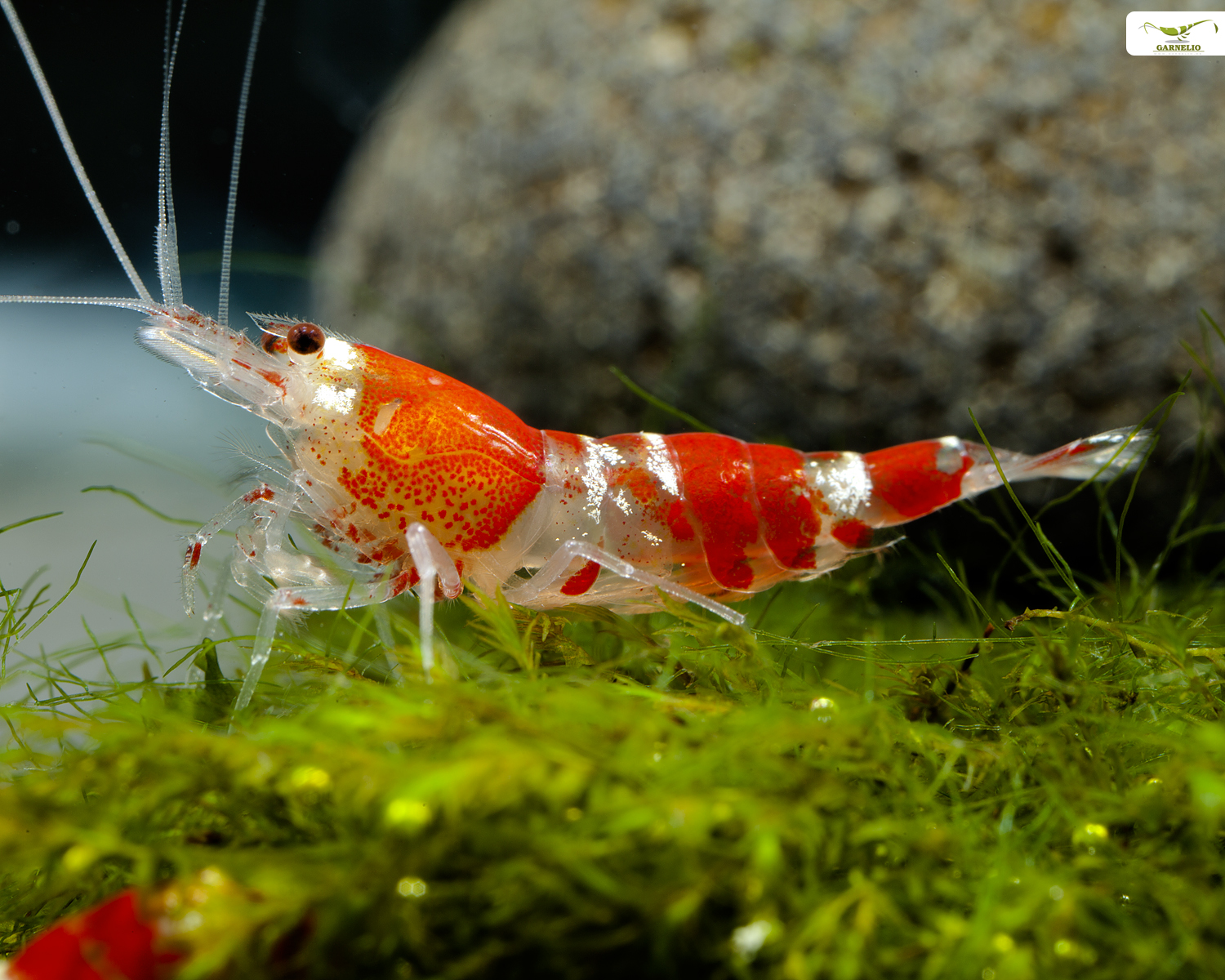
Shrimps from rather hard water
Shrimps like the beautiful colorful Neocaridina or Amano shrimps, which prefer rather hard water, get along in many areas also with tap water. They are suitable for beginners and quite prolific, robust and adaptable. Also for Neocaridina there are hardness salts, recognizable by the addition GH/KH+. If chlorine or copper is present in the tap water, you should also use osmosis water and such a hardening salt for these more robust creatures. If you use tap water, you should tap it after showering, for example - this way the pipes are flushed and the water is not stale. In warm water, more pollutants such as copper dissolve from the water pipes, so the change water for the aquarium should always be filled cold. After filling, the water should come back to temperature - for this purpose, it is best to place the bucket with the fresh water in front of a heater or similar. In order to let chlorine outgas from the tap water, it is best to let it run into the bucket via the shower spray. If you want to be absolutely on the safe side, add a water conditioner to the fresh water in the eggs, which can bind further pollutants.
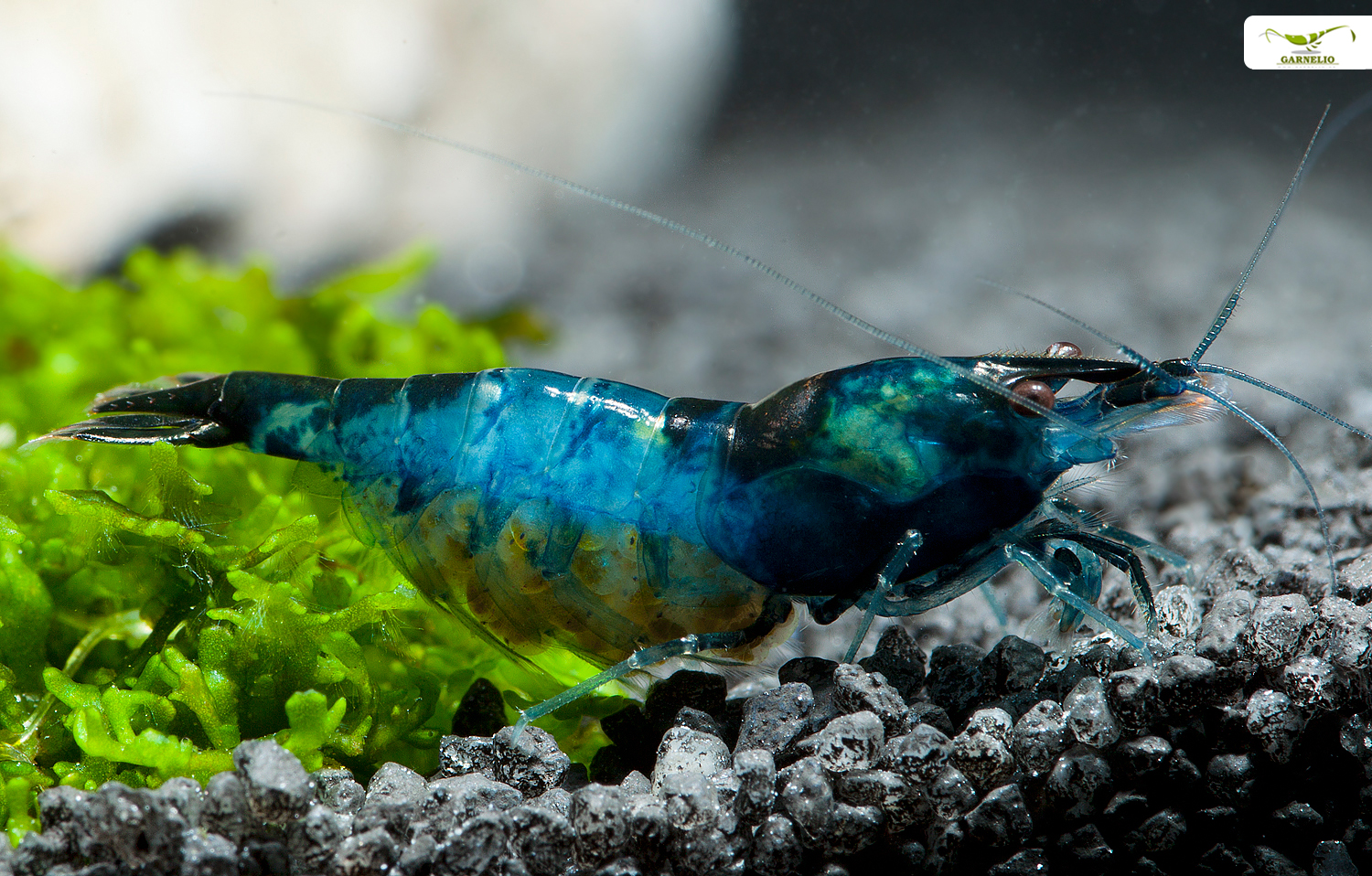
The aquarium temperature
Most common dwarf shrimp in the hobby do fine at room temperature. 18 to 24 °C are perfect for them, so a heater is not necessary.
The filter in the aquarium - basic information
No matter what type of filter you choose, it must run day and night without a break. The actual cleaning work in the filter is, on the one hand, mechanical, because suspended matter is removed from the water. The so-called biological filtration is performed by bacteria that render organic pollutants in the water harmless. To do this, they need oxygen, so the filter must always be running. They die quickly in stagnant water.
The filter is only cleaned when considerably less water comes out - then the filter media are clogged with mulm. They are simply washed out under running water and are then ready for use again.
Different aquarium filters - internal filters and air lifters
Internal filters are practical, here nothing can leak or leak. Make sure to use a shrimp-safe filter, where the shrimp do not get inside. Well suited is for example the Nano corner filter from Dennerle, or also the AquaEl Mini Pat. Airlift filters also belong to the internal filters. They are operated by means of an air pump, here there is no electric drive at all in the shrimp aquarium - very safe for shrimp.
Different aquarium filters - external filters and backpack filters
External filters and backpack filters are located outside the aquarium. A backpack filter is hung over the edge of the aquarium glass, while an external filter is located under the aquarium, often in the aquarium base cabinet. These filters do not take up any space in the aquarium and are visually much more unobtrusive. In addition, they can be used to effectively filter even very large aquariums. The water inlet of the external filter can be made shrimp-proof with a piece of filter sponge, but there are also special stainless steel grids that look better.
Aquarium animals need oxygen
While aquarium plants produce oxygen in the light and release it into the water, they consume it again at night - many do not know this. Therefore, especially at night in very well planted aquariums, there may be a lack of oxygen. But also in summer, when the water warms up and can store less oxygen, the "air" for the inhabitants can become scarce. It then makes sense to aerate the aquarium. An air pump with a bubbling stone or an oxydator is suitable for this.
A good substrate for the aquarium
Neocaridinas and Amano shrimps, which like rather hard water, are happy with water-neutral natural gravel. Even a slightly calcareous gravel is possible here - you have the free choice! Even though colored aquarium gravel is often discouraged, there are varieties that are very suitable for a shrimp aquarium. Make sure that non-toxic color pigments are used and that the bottom grains are coated with synthetic resin, then nothing will happen to your animals, even if something should come loose. Bee shrimp, hybrid breeders or Taiwanese, which prefer soft water, should better sit on dark, active substrate, which softens and stabilizes the water values and lowers the pH. Also with the so-called Soils there is a large selection here in the store. It should be noted that there are pre-fertilized plant soils that release a lot of nitrogen compounds into the water in the beginning. With a special shrimp soil or shrimp soil you do not have this problem.

Aquarium decoration with roots and stones
The so-called hardscape consists of aquarium-suitable roots and just as stones - or only roots or only stones. The common aquarium roots in the Garnelio store are all suitable for shrimp aquaristics. Some roots float up at the beginning until they are full of water. They are either watered beforehand or simply weighted down with a stone until they stay on the ground by themselves.
The root wood contains tannins and can therefore initially color the aquarium water brownish. This effect will pass and does not bother fish or shrimp, on the contrary - the tannins have a nourishing effect on the mucous membrane. Sometimes a bacterial coating forms on fresh roots, which breaks down sugar residues in the wood. Once these have disappeared, the bacterial lawn also disappears.
With the stones there are water-neutral and calcareous ones. If you are planning a soft water aquarium, for example for Caridina logemanni, i.e. bee shrimp, make sure that the stones do not contain lime, because this would harden the water. This can be checked with a little vinegar essence dripped on the stone - if it foams, the stone is not suitable for soft water loving Caridina species. In an aquarium with less sensitive Neocaridina shrimp like Red Fire or Red Sakura such stones can of course be used without hesitation.
Plants in the aquarium
In nature many shrimps occur in largely plantless habitats, but in the aquarium they have no problems with aquarium plants, but rather find good planting good because they can hide here and they provide additional surfaces to sit on. Fresh aquarium plants should be pre-watered for two weeks to ensure that any pesticides brought in from plant rearing cannot harm the shrimp. Please also light well in quarantine and change the water every two days!
Before watering, the rock wool on the roots should be removed, because unwanted substances collect here in particularly high concentrations. Because bubble snails and various worms can also sit on aquarium plants, you should place them in a bubble bath for half a minute before quarantine - use strongly bubbling mineral water for this. The CO2 in the bubbly will anesthetize the stowaways. After two weeks in quarantine, repeat this treatment to eliminate any offspring of the pests that may have hatched.
If this is too much effort for you, you can also simply resort to in vitro plants. They come from the laboratory, are grown directly in the cup in which they are also delivered, and are therefore guaranteed to be free of anything that could harm a shrimp. Here, only the nutrient gel is washed off and then the plant can already be inserted into the aquarium.
Generally, you put in the background rather the higher and in the foreground rather the lower plants, so that you have a good view of the aquarium and the aquarium inhabitants.
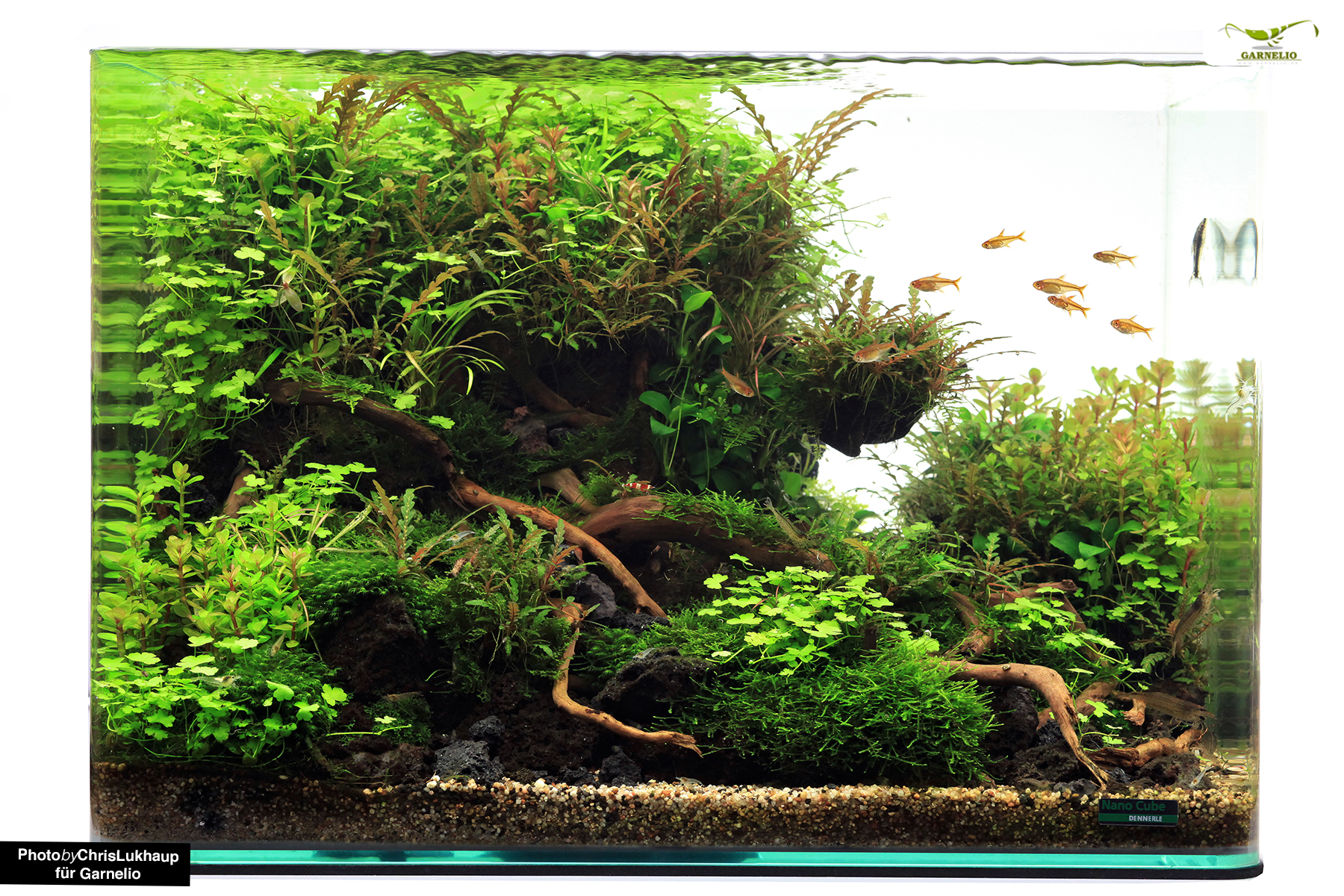
Plant fertilizer in the aquarium
Often you hear: No fertilizer in the shrimp aquarium! There's copper in it! But don't worry - if you follow the dosage instructions, no aquarium plant fertilizer will harm your little crawlers. If it contains copper at all, then only very low concentrations that do not harm the animals. The Dennerle plant fertilizers for aquariums are especially adapted to shrimps and co. and do not endanger your animals.
Light for the plants
Shrimps don't actually need much light, but the plants do. If you have chosen a complete set, aquarium lighting is already included here, which is usually well sufficient for most aquarium plants. Most aquatic plants in the store are suitable for medium light, in the description most labels go into the light requirement. Just pay attention to this point, then nothing will stand in the way of a good and beautiful aquarium greenery.
Running in the aquarium
By the term "run-in" an aquarist means the time that the aquarium needs to run stably before shrimp or fish are allowed into the tank. During the initial period, the level of toxic nitrogen compounds can rise sharply - the so-called nitrite peak can kill fish and also shrimp. Therefore, a new aquarium should be allowed to settle for at least two to four weeks without stocking. To do this, it should be completely set up and planted, and all the technical equipment such as filters, lights and everything else should already be connected so that the aquarium can run in real operation. Only then can the necessary bacteria settle, which later transform the excretions of the aquarium animals first into ammonia and nitrite and then in the second step into comparatively harmless nitrate, which can be utilized by the plants. This process can be started by adding a bacterial preparation with living filter bacteria to the freshly set up tank. To provide these bacteria with the necessary food to work well, add some shrimp food to the aquarium - a few grains are enough. When the nitrite test shows no NO2 after two to four weeks, the aquarium can be stocked.

The stocking for a shrimp aquarium
Shrimps have a certain social behavior and need the company of conspecifics, then they are less shy. An initial stocking of 10 animals per species is considered a good guideline, more would of course be possible. Very swimming shrimps like Amano shrimps need an aquarium with an edge length of at least 60-80 cm. Other dwarf shrimp can already live in a nano aquarium of 20 or 30 liters. By-fish are possible in aquariums with an edge length of 60 cm or more, but you should take good care that the water values fit and that the fish do not eat shrimp.
Water change and aquarium care
A weekly water change of 10-30% has proven itself in aquarium practice. If there is a lot of feeding and fertilizing, it should be increased up to 50%, so that no unwanted substances can accumulate in the water. When changing the water, the glass panes are usually cleaned directly, which is a good idea. Then they never become so dirty that one must scrub strongly. By the way, many shrimp breeders let the back wall and the side panes of the aquarium become algae, so that the little ones can eat growth. The danger of sucking in shrimp during water changes can be avoided by securing the hose with a nylon sock. Once a month not only water is changed, but also mulm is sucked off - for this purpose special mulm bells or mulm suckers are available. Regular mulching is especially necessary at the feeding areas.
The fresh water has been pre-treated as described above and is then carefully filled into the aquarium - this is best done with a watering can with a shower attachment.
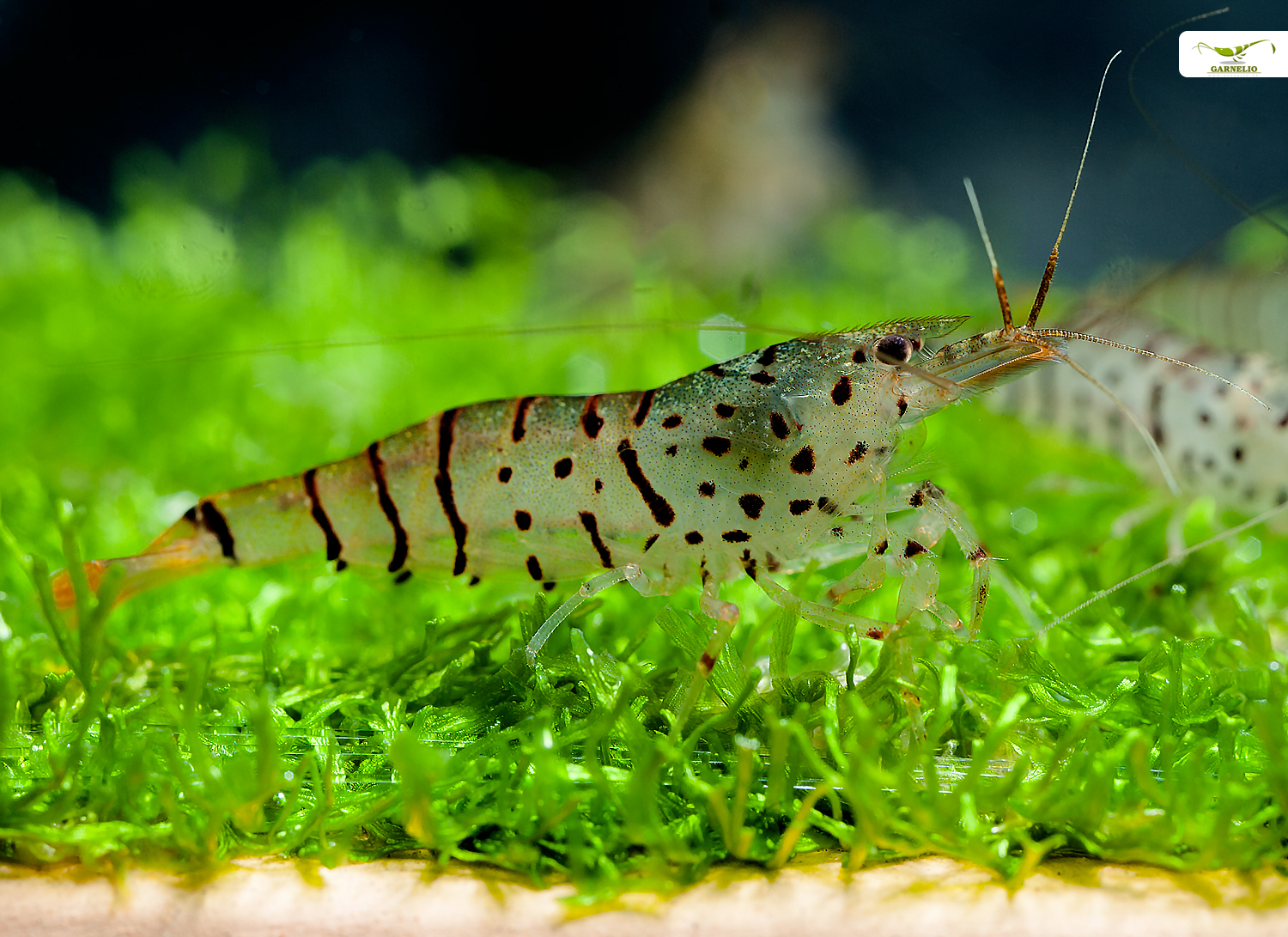
Shrimp food
In nature shrimps eat mainly residues and especially biofilms, i.e. all kinds of coatings, young algae (Amano shrimps also eat larger algae like filamentous algae) and bacterial coatings. They always find something to eat in the aquarium and do not starve quickly. You can therefore safely hold back on feeding, especially as a beginner, and only feed sparingly. A high quality shrimp food is adapted to these feeding habits. With our NatureHolic main feed you do everything right in any case and meet exactly the taste of the animals. You can supplement with Mineral Feed, which provides the shrimp with the necessary minerals to build up their shell.
Foliage in the aquarium
Brown autumn leaves belong to the favorite food of the animals in the home waters of our popular invertebrates in the aquarium. It contains valuable fiber and tannins and forms humic substances during decomposition, which help especially the crustaceans in the aquarium during moulting, make the water suitable for shrimps and even bind pollutants. Particularly valuable biofilms form on the foliage, which are grazed by the shrimp. The brown autumn leaves of native deciduous trees are perfect. Two or three of these leaves should always be available to the shrimp in the aquarium - at the same time a beautiful, natural aquarium decoration. Alternatively, you can use sea almond leaves and other foliage, which you can find in our store.
The whole team of Garnelio wishes you a lot of fun with your new co-inhabitants!

überwiegend gut
sehr sachlich und informativ, Glückwunsch zu den hervorragenden Bildern, man wünscht sich bei den Bildern auch einen kleinen Kommentar zu dem, was man sieht
Widersprechen würde ich der behaupteten uneingeschränkten Empfehlung des Nanoaquariums für Anfänger. Ein großes Becken verzeiht schneller Fehler und welcher Anfänger macht keine. Die Verfügbare Technik ist zwar bemerkenswert aber da ist es auch so, dass Vieles eher Spielzeug ist.
Was ich als Ergänzung empfehlen würde ist ein Abschnitt über die Tiere. Welche gibt es, welche kann ich zusammenhalten, welche sollte ich nicht. Wie kann ich die "Lieblingsfarbe" über viele Generationen erhalten.
Top
Dankeschön für die vielen Informationen
Ich freue mich Jetzt schon auf mein Einrichten im neuen Aquarium